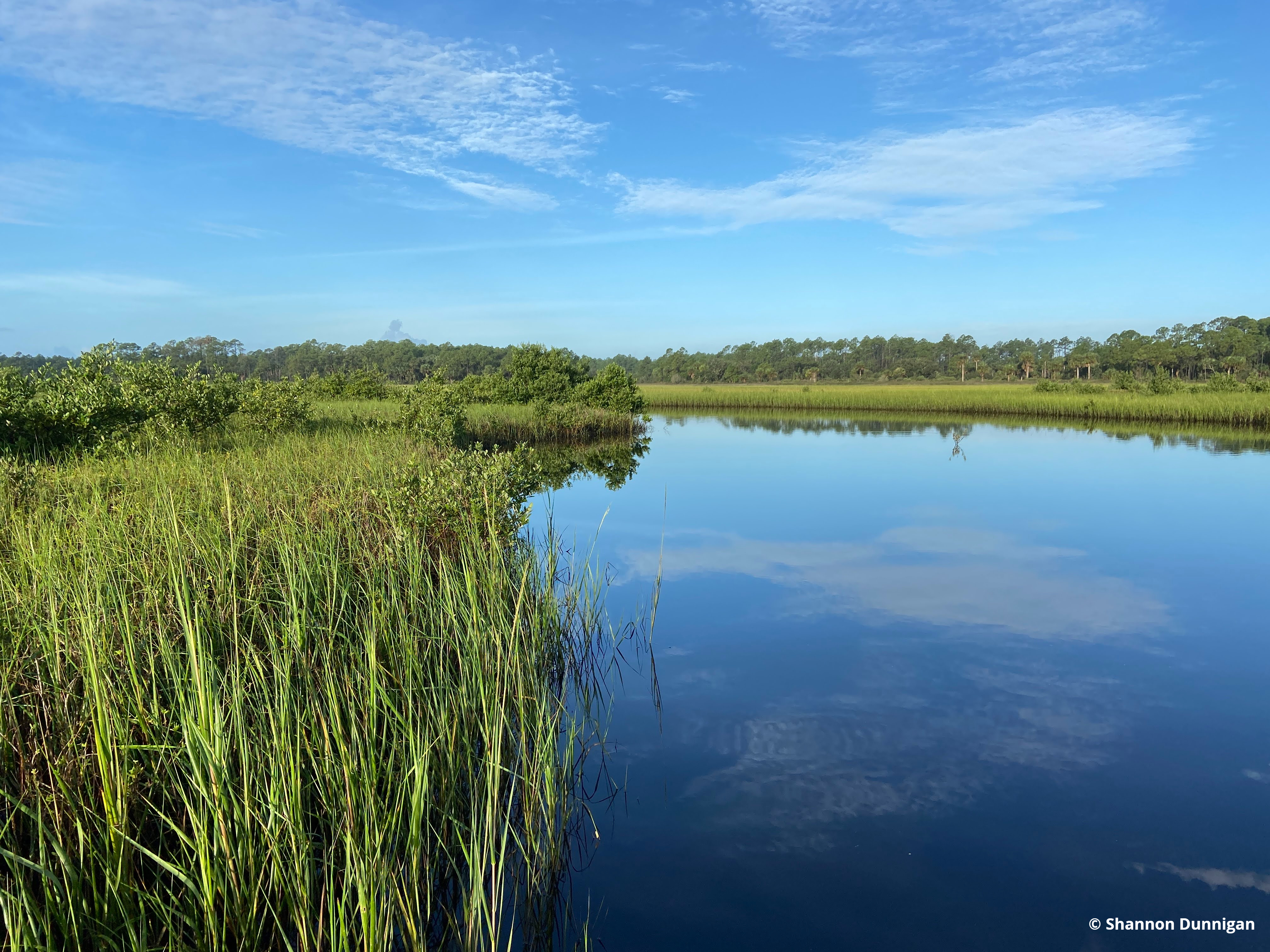2023 Annual System-Wide Monitoring Program (SWMP) Report
Guana Tolomato Matanzas National Estuarine Research Reserve
Welcome
This open source report provides a baseline summary of the three longest running components of the System-Wide Monitoring Program (SWMP) at the Guana Tolomato Matanzas National Estuarine Research Reserve: continuous water quality, discrete water quality, and weather through December 2023.
Summary
Patterns in rainfall, salinity, temperature, light intensity, and dissolved oxygen driven by climatic patterns largely influenced water quality conditions in the Guana Tolomato Matanzas estuary in 2023. Northeast Florida received consistent and large amounts of precipitation in July with almost 61% of days in July having detectable levels of rainfall (see Chapter 4). July also had the most amount of heavy rain (7.6 - 50 mm/hr) and these heavy summer rains lowered salinities beyond their average daily ranges, particularly at the sites farthest from the inlets (Pine Island and Pellicer Creek). Although no tropical cyclones impacted the GTM estuary this year, there were 11-14 possible Nor’easter events identified (see Section 6.2). The wind-driven Nor’easters and fall “King Tides” helped raise salinities, particularly in April at Pellicer Creek and September-October at all sites. Heavy rainfall in March, April, June, and December were all associated with Nor’easter events. After the summer rains, early fall had very few rainy days. Although there were not many rainy days in October, all the rainfall for the month was collected on one day (October 12, 2023).
Daily average air temperatures were high and variable during the first part of the year, particularly in February, but fell within the historical average daily range through October. There was less intense light in the extreme months of the year (Jan, Feb, Nov, Dec) and more in the mid-months of the year. The most intense light was observed between April – August. Although average air temperatures fell within the historical average daily range throughout most of the year, water temperatures were often on the higher end of the range. All stations experienced high temperatures in July and August. Surprisingly, water temperatures in February were so high that they neared the 2018 record (see Section 6.4). Cooler weather in October brought on drops in daily averages at all four sites, though most pronounced at Pellicer Creek.
Most of the sites reported daily average dissolved oxygen values on the lower end of their average ranges in the first quarter of the year, generally coinciding with the higher temperatures observed during the same period of time. Daily averages fell outside average ranges at Pine Island several times throughout the year. After the cooler weather in October and the fall Nor’easters and King Tides, the daily dissolved oxygen values increased above the average range. This year saw some of the lowest and most prolonged periods of dissolved oxygen at Pine Island in the last five years. Values fell below the 2 mg/L hypoxia threshold several times a day and for multiple days in August.
Chlorophyll a values were often higher than average at all sites this year. Fort Matanzas was the only site that did not experience record monthly high values. This year is the sixth consecutive year that chlorophyll a values were above the state threshold at San Sebastian and the second year for Pine Island. With the exception of 2020, which likely is an underestimate due to missing summertime values, Pellicer Creek continues to see annual geometric means well above the state threshold.
Interpretations of patterns in total nitrogen (TN) and dissolved inorganic nitrogen (DIN) were difficult this year since quite a bit of the values were not able to be calculated. At Pine Island and Pellicer Creek, however, high TN was observed in the high rainfall months of July and August and also in November. Total Kjeldahl Nitrogen (TKN) was lower than average for most stations; however, all stations experienced higher levels in May, August, and November. Total phosphorus continued to fall below the state threshold for every station and similar to TKN, all stations experienced elevated values of total phosphorus and orthophosphate in May. Relatively high levels of orthophosphate were observed at Pine Island January through May and again in August.
Dissolved organic carbon (DOC) at the stations was within ranges in the first half of the year; however, following the heavy summertime rains in July, many stations experienced elevated DOC in July or August. October saw some of the highest values at many of the stations, particularly Fort Matanzas. Bacteria was detected in water samples from Pellicer Creek more often and in higher quantities than the other three stations. This year, bacteria samples were frequently reported at the minimum detection limit for all stations except for the months that saw heavy rains.
Citation
Kimmel, S.D., K. Petrinec, M. Howkins, and N. Dix. 2024. Guana Tolomato Matanzas National Estuarine Research Reserve 2023 Annual System-Wide Monitoring Program Report. Guana Tolomato Matanzas National Estuarine Research Reserve, Ponte Vedra Beach, FL, USA. Available online: https://gtmnerr.github.io/2023-annual-swmp-report/ (accessed on Day Month Year).
This report will be updated in July 2024 after the collected data has undergone the secondary annual quality assurance and quality control (QAQC) process. For more information on the SWMP QAQC process, please visit http://cdmo.baruch.sc.edu/data/qaqc.cfm.
